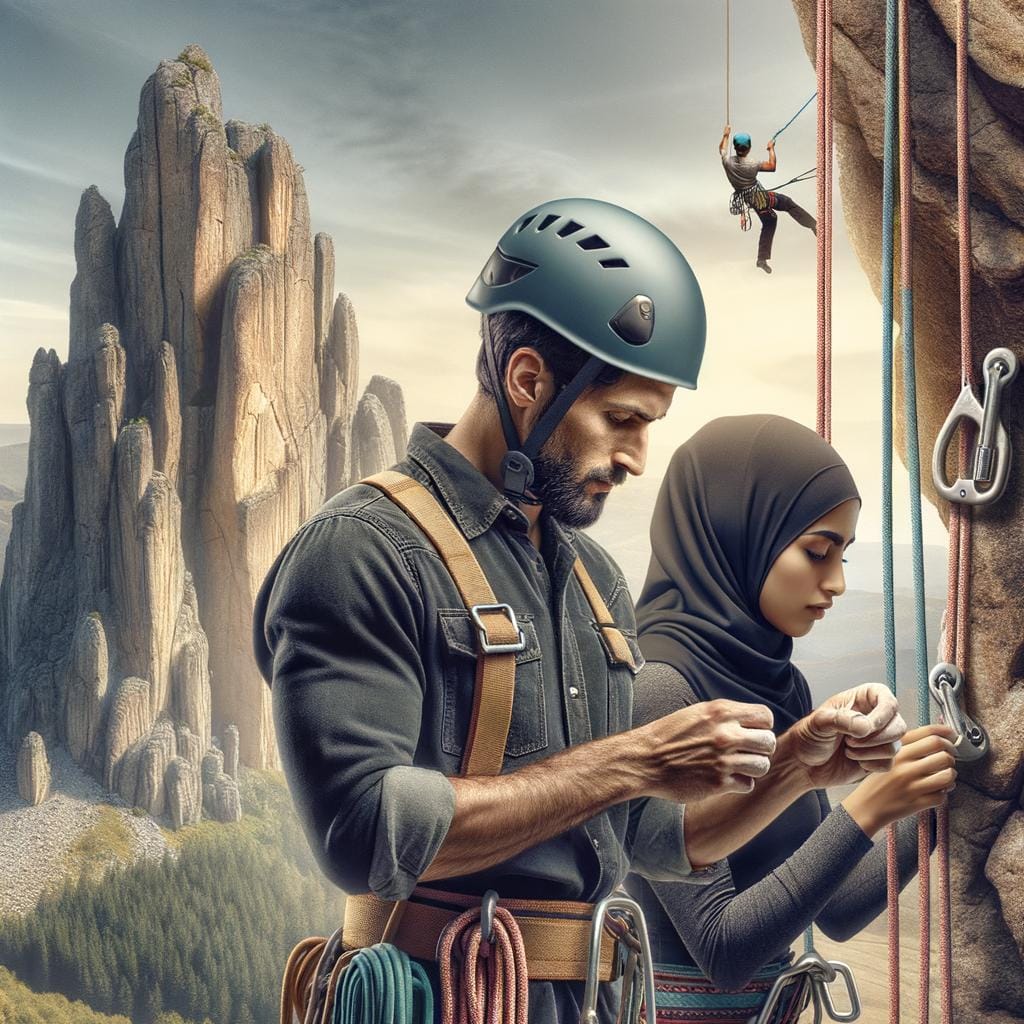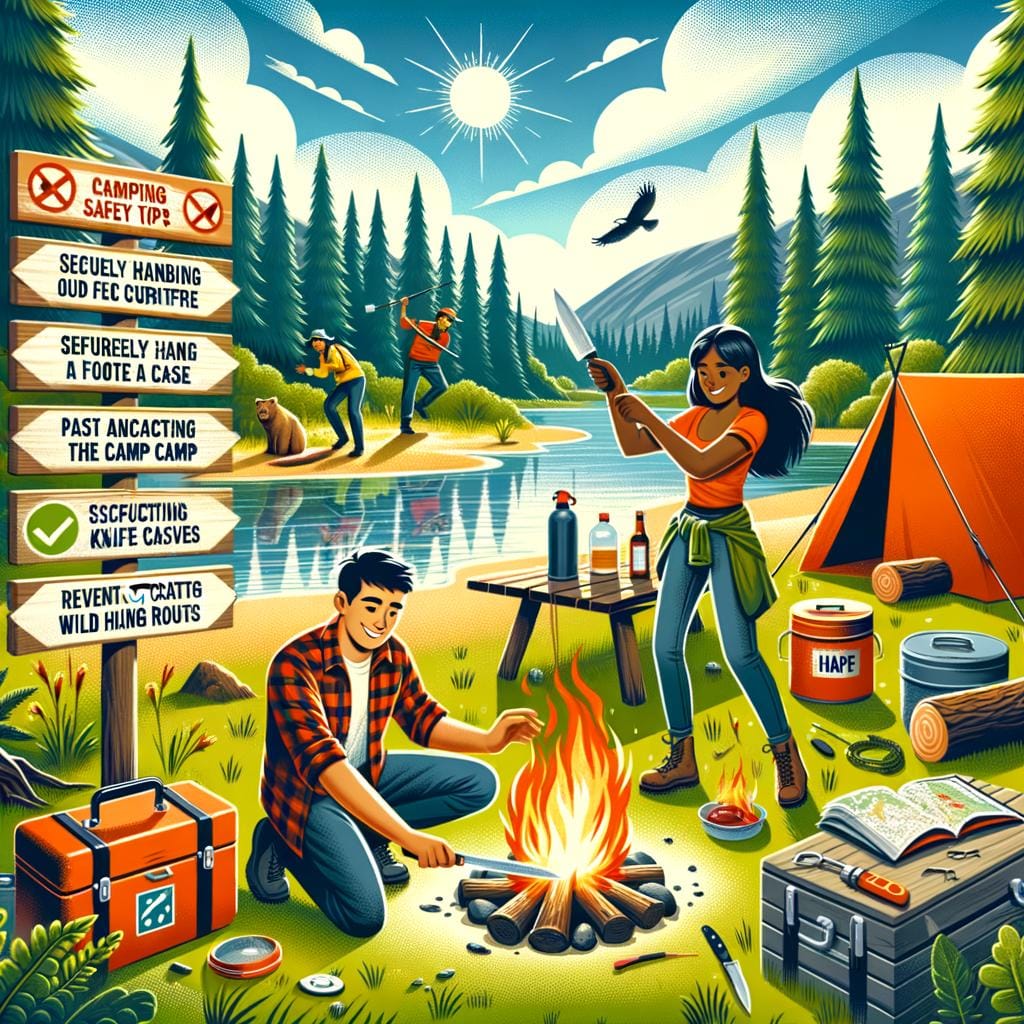Rock climbing safety is paramount when engaging in this exhilarating yet risky activity. Whether you are a seasoned climber or a novice, being aware of the potential dangers and taking necessary precautions can make all the difference in ensuring a safe and enjoyable climbing experience. In this article, we will delve into the vital aspects of rock climbing safety – from the importance of proper equipment to understanding different types of climbing accidents and how to avoid them.
When it comes to rock climbing, having the right gear can literally be a lifesaver. From helmets to harnesses, ropes, carabiners, and more, each piece of equipment plays a crucial role in keeping climbers safe on the rock face. We will explore in detail why investing in high-quality gear and regularly inspecting it for wear and tear is non-negotiable when it comes to rock climbing safety.
Additionally, we will discuss the essential pre-climb safety checklist that every climber should go through before embarking on their ascent. By incorporating these steps into your routine, you can significantly reduce the risk of accidents and ensure a smoother climb ahead. Stay tuned as we uncover more tips, tricks, and expert advice on how to navigate the world of rock climbing safely and effectively.
Importance of Proper Equipment in Rock Climbing Safety
Rock climbing safety is paramount in ensuring a successful and enjoyable climbing experience. One of the key factors contributing to rock climbing safety is the use of proper equipment. Climbers rely heavily on their gear to keep them secure while scaling challenging heights, making it essential to invest in high-quality, well-maintained equipment. Harnesses, ropes, carabiners, helmets, and climbing shoes are just some of the essential gear that climbers should never compromise on.
Harnesses are a critical component of rock climbing safety, as they keep climbers securely attached to ropes during ascents and descents. It is important to inspect harnesses regularly for signs of wear and tear, such as fraying or weakened stitching, and replace them when necessary. Additionally, properly securing harnesses by double-checking buckles and tie-in knots before starting a climb can prevent accidents caused by human error.
Ropes also play a vital role in rock climbing safety, serving as the primary lifeline that supports climbers during their ascent. Using dynamic ropes designed to absorb the energy of a fall can reduce the impact force on climbers in case of a slip or fall.
Ensuring that ropes are properly coiled, stored, and free from any damage like cuts or abrasions is crucial for maintaining their integrity and reliability. By prioritizing the use of high-quality equipment and conducting regular inspections, climbers can enhance their safety measures while indulging in this thrilling sport.
| Rock Climbing Safety Equipment | Importance |
|---|---|
| Harnesses | Essential for securely attaching climbers to ropes |
| Ropes | Serve as the primary lifeline supporting climbers during ascents |
Pre-Climb Safety Checklist for Rock Climbers
Inspecting Equipment
Before embarking on a rock climbing adventure, it is crucial for climbers to conduct a thorough inspection of their equipment. This includes checking the harness for any signs of wear or damage, ensuring that carabiners are properly secured and functioning correctly, inspecting ropes for fraying or cuts, and examining helmets for any cracks. Taking the time to inspect equipment can significantly reduce the risk of accidents and ensure a safer climbing experience.
Checking Weather Conditions
Another essential item on the pre-climb safety checklist is checking the weather conditions. Climbing in adverse weather such as rain, strong winds, or extreme heat can increase the danger level significantly. It is important to monitor weather forecasts leading up to the climb and make informed decisions based on this information. Additionally, being prepared with appropriate clothing layers and gear for unexpected weather changes is key to ensuring a safe climbing outing.
Reviewing Route Information
Before starting a climb, it is important for rock climbers to review route information carefully. Understanding the difficulty level of the climb, potential hazards along the way, and any specific instructions or beta from other climbers can help in planning and executing a safe ascent.
By familiarizing themselves with the route beforehand, climbers can anticipate challenges and take necessary precautions to navigate through them safely. Following this pre-climb safety checklist ensures that climbers are well-prepared for a successful and secure rock climbing experience.
Understanding the Types of Climbing Accidents and How to Avoid Them
Rock climbing can be an exhilarating and rewarding activity, but it also comes with potential risks. Understanding the types of climbing accidents that can occur is crucial for ensuring rock climbing safety. One common type of accident is a fall, which can result from loose footholds, inadequate harnessing, or improper belaying techniques. It is essential for climbers to always double-check their gear and have a reliable climbing partner to prevent falls.
Another type of climbing accident to be aware of is rockfall, where loose rocks or debris come loose and fall onto climbers below. This can happen unexpectedly and cause serious injuries if climbers are not vigilant about their surroundings. To avoid rockfall accidents, climbers should always wear helmets, carefully choose their routes to minimize exposure to loose rocks, and communicate effectively with their belayer about any potential dangers.
Additionally, overuse injuries are a common occurrence in rock climbing due to the repetitive nature of certain movements and the strain they put on the body. To prevent overuse injuries such as tendonitis or strains, it is important for climbers to listen to their bodies, take rest days when needed, warm up properly before climbing, and engage in cross-training exercises to build strength and flexibility.
Prioritizing proper technique over pushing physical limits can also help reduce the risk of overuse injuries in rock climbing.
| Types of Climbing Accidents | Preventive Measures |
|---|---|
| Falls | Double-check gear and have a reliable climbing partner |
| Rockfall | Wear helmets, choose routes carefully, communicate effectively |
| Overuse Injuries | Listen to your body, take rest days, warm up properly |
Tips for Properly Securing Harnesses and Ropes in Rock Climbing
Properly securing harnesses and ropes in rock climbing is crucial for ensuring the safety of climbers. One of the key aspects of rock climbing safety is to always double-check your gear before starting a climb. Make sure that your harness is securely fastened and adjusted properly to your body.
Inspect your ropes for any signs of wear and tear, such as fraying or damage, and replace them if necessary. Remember, your equipment is your lifeline while climbing, so it’s important to take the time to ensure everything is in good working condition.
When tying knots in rock climbing, it’s essential to use the correct ones for the specific situation. The figure-eight knot is a common choice for tying into a harness because of its reliability and ease of inspection.
Additionally, tying proper backup knots can provide an extra layer of security in case the main knot fails. Always educate yourself on the different types of knots used in rock climbing and practice tying them until you are confident in your abilities.
In addition to securing harnesses and ropes properly, communication with your climbing partner is essential for rock climbing safety. Before starting a climb, establish clear signals or commands that you will use to communicate with each other while on the wall. Effective communication can help prevent misunderstandings and potential accidents during the climb. By prioritizing proper gear inspection, knot-tying skills, and communication with your partner, you can significantly enhance rock climbing safety and enjoy a more secure climbing experience.
Emergency Procedures and First Aid for Rock Climbing Incidents
Rock climbing safety is of utmost importance when engaging in this thrilling and adventurous activity. Despite the excitement that comes with scaling rock faces, it is crucial to be prepared for any emergencies that may arise during a climb. Knowing the proper emergency procedures and first aid techniques can make a significant difference in ensuring a safe and successful climbing experience.
When faced with a rock climbing incident, staying calm and acting quickly are essential. Here are some key steps to follow in case of an emergency:
- Assess the situation: Determine the severity of the injury or situation before taking any action.
- Call for help: If necessary, contact local authorities or emergency services for assistance.
- Provide first aid: Administer first aid to the best of your ability while waiting for help to arrive. This could include treating wounds, stabilizing fractures, or managing dehydration.
- Evacuate safely: If the climber is unable to move on their own, carefully plan and execute an evacuation strategy while ensuring their safety.
It is also important for climbers to be equipped with basic first aid knowledge and supplies when hitting the rocks. Carrying a small first aid kit containing essentials such as bandages, antiseptic wipes, gauze pads, and pain relievers can be a lifesaver in times of need.
Additionally, receiving training in wilderness first aid can provide climbers with valuable skills in handling emergencies in remote locations where professional medical help may be scarce. Remember, being prepared is key to rock climbing safety.
Training and Conditioning for Safe Rock Climbing
Rock climbing is a physically demanding activity that requires strength, endurance, and flexibility. Proper training and conditioning are crucial not only to improve your climbing performance but also to ensure your safety on the rocks. Here are some key tips for preparing your body for a safe and enjoyable rock climbing experience:
- Strength Training: Building upper body and core strength is essential for rock climbing. Focus on exercises that target muscles used in climbing such as pull-ups, push-ups, planks, and hanging leg raises.
- Cardiovascular Conditioning: Climbing can be an intense cardiovascular workout, so incorporating activities like running, cycling, or hiking into your routine can help improve your endurance on the rocks.
- Flexibility Exercises: Flexibility plays a significant role in rock climbing performance and injury prevention. Stretch regularly to improve your range of motion in key muscle groups like shoulders, hips, and hamstrings.
In addition to physical preparation, mental readiness is also crucial for safe rock climbing. Practice mindfulness techniques such as visualization and controlled breathing to help stay calm and focused while tackling challenging routes. Remember that proper training and conditioning go hand in hand with rock climbing safety – being physically fit and mentally prepared can make all the difference in avoiding accidents on the rocks.
Whether you’re a beginner climber or a seasoned pro, it’s important to listen to your body and progress at a pace that feels comfortable for you. Gradually increase the intensity of your workouts and climbs over time to avoid overexertion or injury. Consulting with a professional trainer or coach can also provide valuable guidance on creating a tailored training plan based on your individual fitness level and climbing goals.
Ultimately, investing time in training and conditioning will not only enhance your performance on the rocks but also significantly reduce the risk of injuries or accidents. By prioritizing physical fitness, mental resilience, and proper technique in your rock climbing practice, you’ll be better equipped to navigate challenging terrains safely and confidently.
Remember: safety always comes first in rock climbing, so make sure to prioritize both education about proper techniques as well as physical preparation through training And Conditioning strategies for a successful climb every time.
Expert Advice on Rock Climbing Safety From Professional Climbers
Learn From the Pros
Professional climbers have years of experience and knowledge when it comes to rock climbing safety. They understand the risks involved in this adventurous sport and have valuable insights to share with novice climbers. One crucial piece of advice they often emphasize is the importance of proper training and education before attempting any climb. By learning from the pros, climbers can develop essential skills and techniques that will enhance their safety on the rocks.
Choosing the Right Gear
Professional climbers also stress the significance of using high-quality gear for rock climbing. From ropes and harnesses to helmets and carabiners, having reliable equipment can make a significant difference in ensuring safety while scaling a rock face. These experts recommend investing in top-of-the-line gear that meets industry standards and undergoing regular inspections to check for wear and tear. By prioritizing gear quality, climbers can minimize the risk of accidents caused by equipment failure.
Risk Management Strategies
Expert climbers often practice risk management strategies to enhance their safety on challenging climbs. This includes meticulously planning routes, assessing weather conditions, and performing thorough safety checks before embarking on any ascent. Professional climbers also advocate for maintaining clear communication with climbing partners throughout the journey to prevent misunderstandings that could lead to accidents. By incorporating risk management techniques into their climbing routine, enthusiasts can enjoy this exhilarating sport with confidence in their safety protocols.
Conclusion
In conclusion, it is evident that rock climbing safety should always be a top priority for climbers of all levels. Understanding the importance of proper equipment, adhering to pre-climb safety checklists, and being aware of the different types of climbing accidents are crucial steps in promoting a safe climbing experience.
By following expert advice on properly securing harnesses and ropes, as well as being knowledgeable on emergency procedures and first aid techniques, climbers can significantly reduce the risk of accidents while scaling up rocky terrains.
Moreover, education and awareness play a key role in enhancing rock climbing safety. Training and conditioning not only improve physical stamina but also enhance mental preparedness when facing challenging climbs. Professional climbers emphasize the significance of continuous learning and staying updated on the latest safety protocols in rock climbing. By prioritizing education through workshops, courses, or guidance from experienced climbers, individuals can further equip themselves with the necessary skills to mitigate risks effectively.
In essence, rock climbing safety is not just about avoiding accidents but also about fostering a culture of responsibility among climbers. By valuing safety measures and promoting a community that prioritizes education and awareness, we can create a safer environment for all enthusiasts to enjoy this thrilling sport while minimizing potential risks. Remember, whether you are a beginner or an experienced climber, embracing the principles of rock climbing safety is essential for a fulfilling and secure climbing experience.
Frequently Asked Questions
How Do You Stay Safe When Rock Climbing?
When rock climbing, I prioritize safety by ensuring I have the proper equipment, including ropes, harnesses, and helmets. I always double-check my gear for any signs of wear and tear before starting a climb.
Communication with my climbing partner is key – we discuss our plan, use clear signals during the climb, and constantly check each other’s equipment to prevent any accidents.
How Do You Make Rock Climbing Safe?
Making rock climbing safe involves thorough planning and preparation. Before heading out to climb, it’s essential to research the route, know the area’s potential hazards, and familiarize yourself with emergency procedures.
Proper training is crucial; taking courses on climbing techniques, rescue skills, and risk management can significantly minimize the dangers associated with the sport. Constant vigilance during climbs ensures that you are aware of your surroundings and potential risks at all times.
Is Rock Climbing a High Risk Sport?
Rock climbing is often considered a high-risk sport due to its inherent physical challenges and potential dangers. The sport involves scaling steep cliffs or mountains using a combination of strength, agility, and problem-solving skills while relying on ropes and anchors for safety.
Factors such as falling rocks, unstable terrain, weather conditions, equipment failure, and human error contribute to the risk level associated with rock climbing. However, with proper training, preparation, use of safety gear, and adherence to established safety protocols, many climbers enjoy the sport safely without incident.

An avid outdoor enthusiast, writer, and environmental advocate who has spent over two decades exploring the world’s most breathtaking landscapes. With a background in environmental science and a passion for adventure, Frances combines her love for nature with her talent for storytelling to inspire others to embark on their own outdoor journeys.





